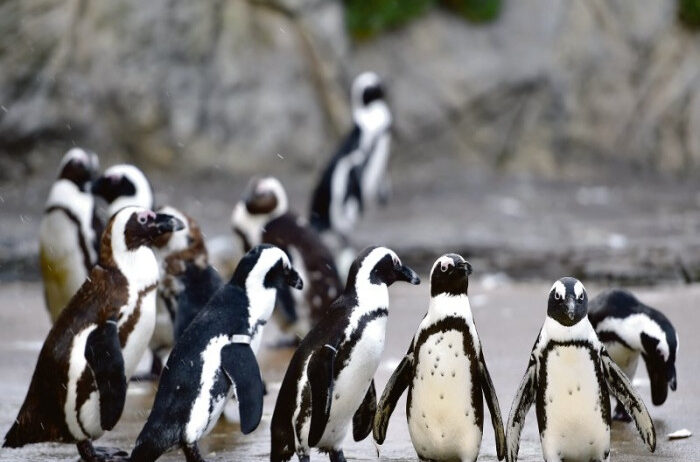Emperor penguins are often regarded as the quintessential icons of the Antarctic region. Their striking black and white plumage, coupled with their articulate parental care, captures the attention and admiration of people worldwide. However, beneath the surface of their charming exterior lies a species teetering on the brink of potential extinction, primarily due to the catastrophic impacts of climate change and global warming.
As the planet undergoes unprecedented warming, the consequences for the emperor penguin population have become increasingly dire. Emperor penguins rely heavily on sea ice as a critical habitat for breeding, raising their chicks, and hunting for food. The creation of sea ice is directly linked to the frigid temperatures of the Antarctic. However, with temperatures rising due to the greenhouse effect, the amount and stability of this crucial habitat are dwindling rapidly. Scientific projections suggest that if current trends continue, a significant decline in the emperor penguin population could occur within this century.
Climate change manifests in various ways, all of which contribute to the precarious existence of emperor penguins. One central phenomenon is the alteration of ice formation and melting patterns. Emperor penguins are unique among avian species in that they breed during the harsh Antarctic winter, a period characterized by extreme cold and prolonged darkness. The timing of the ice formation is vital; if the sea ice melts too soon, it could lead to increased chick mortality. Young penguins depend on stable ice for foraging and as a platform from which to enter the frigid waters. If they cannot establish themselves on a reliable ice surface, their likelihood of survival diminishes significantly.
Another compounding factor exacerbating the plight of emperor penguins is the shifting availability of krill, their primary food source. Krill populations are also sensitive to changes in ocean temperature and salinity which are driven by climate shifts. As warmer waters affect the ecosystems, the abundance and distribution of krill may be altered, leading to food scarcity. This could result in adult penguins struggling to find enough nourishment to sustain themselves for successful breeding.
The migratory patterns and habits of the emperor penguin indicate an extraordinary adaptation to their environment; however, the rapid pace of climatic shifts may outstrip their ability to adapt. In a warming world, the intricate synchrony of breeding cycles and environmental conditions becomes disrupted. Penguins may find themselves in a precarious balancing act, wherein they must constantly adjust their breeding and foraging strategies in response to shifting ice conditions.
While these conditions are alarming, the plight of the emperor penguin serves as a poignant metaphor for a larger, systemic challenge facing our planet. The penguins, with their endearing behaviors and communal caregiving, evoke a sense of connection to nature that many find compelling. Their struggle mirrors the fate of countless other species whose habitats are similarly compromised by human-driven climate change. As apex indicators of ocean health, a decline in their population signifies a broader environmental malaise.
The relationship between emperor penguins and their habitat is deeply intertwined with global ecosystems. Their survival hinges not only on direct actions to reduce greenhouse gas emissions but also on an overarching shift in how humanity interacts with nature. Conservationists and scientists are advocating for more effective measures to protect marine ecosystems and the delicate balance of which emperor penguins are a part. This includes establishing marine protected areas, regulating fishing practices, and investing in renewable energy solutions to mitigate climate change’s long-term impacts.
Local communities and individuals also play indispensable roles in addressing the crisis. Awareness campaigns, educational outreach, and citizen science initiatives can galvanize public enthusiasm and action. Every small effort to reduce one’s carbon footprint contributes to the collective endeavor of creating a sustainable future for biodiversity, which includes the EMC perdition of emperor penguins. Supporting policies that advocate for sustainability can lead to substantial, positive impacts in the long run.
Moreover, international cooperation is crucial. Climate change knows no borders; thus, a unified global effort is necessary to combat its effects effectively. The Paris Agreement represents a concerted effort among nations to cap global temperature rise and mitigate the impacts of climate change, which can, in turn, protect vulnerable species like the emperor penguin. The realization that certain species may not survive if current trends persist should awaken a global sense of urgency and accountability.
Emperor penguins, as emblematic as they are of the Antarctic, epitomize a larger issue that transcends ecology. The comprehension of their struggle compels a reevaluation of human priorities concerning the environment. These majestic birds serve not only as symbols of the Antarctic but as harbingers of the challenges that lie ahead. Their extinction could signify lost opportunities—lost genetic diversity, lost ecological roles, and lost inspiration for future generations to forge a healthy relationship with our planet.
Ultimately, the fate of the emperor penguin accentuates the urgent necessity of action against climate change. While their plight may be one amongst many, it serves as a compelling reminder that all species are intricately woven into the fabric of our ecosystem. Protecting the emperor penguins is not merely about preserving a charming species; it is about safeguarding the overall health of our planet. The time for action is now—not just for the emperor penguins, but for the future of life on Earth itself.








